Zikalala issues part of rhino report
https://pressreader.com/article/281573769304375
It finally comes five years after it was commissioned by KwaZulu-Natal’s former premier, after a surge in rhino poaching.
Mail & Guardian, 20 May 2022 Simon Bloch
Amid public outrage and under pressure from the Democratic Alliance, KwaZulu-Natal's Premier Sihle Zikalala has finally released part one of the report on the province’s rhino poaching crisis.
This week’s release of the first part of the report, titled Massacre Part 1, Report of the Task team into Rhino Poaching in Kwazulu-natal, comes 45 days after the Democratic Alliance’s (DA) spokesperson for environment and tourism, Heinz de Boer, submitted a public access to information application.
The report begins by stating: “Ezemvelo KZN Wildlife, an organisation whose predecessor, the Natal Parks Board, was acknowledged as a world leader in conservation, has become a shadow of its former self.”
“Ezemvelo in the recent past has been facing an unprecedented level of poaching of both the critically endangered black and the white rhinos. Rhino poaching at its present levels could destroy the heritage for which the organisation is famous and the very species the organisation saved would again be under threat of extinction,” it warns.
The report was commissioned in 2016 by the province’s former premier, Willies Mchunu, following a surge in rhino poaching.
Documents show Zikalala and his provincial executive repeatedly quashed attempts to make the report public, before De Boer submitted his application. De Boer said the premier’s office kept the report under “lock and key” for more than two years. “The report’s findings and recommendations are critical to the survival of the species. It is unconscionable that it has been withheld from members of the conservation committee, law enforcement authorities, key roleplayers and rhino security experts,” he said.
De Boer said he received notice from Nonhlanhla Mkhize, director general in the premier’s office, advising him that part two of the report would not be released.
“She indicated part two of the report contains confidential information of names of witnesses and information regarding investigations, which is classified in terms of minimum information security standards, when information is classified as restricted, confidential, secret or top secret,” he said. “I am pushing for the conservation committee to receive the second part of the report, so we can sit in committee and properly scrutinise the report.”
The provincial head of the economic development, tourism and environmental affairs department, Ravi Pillay, acknowledged the conservation authority was on the rocks. “As far as Ezemvelo is concerned, it’s an entity in crisis, there’s no dispute about that. We are very concerned about the infiltration of criminal elements and syndicates into the workforce of Ezemvelo.”
Among other things, part one of the report highlights the need for improved relations and cooperation with people surrounding the Hluhluwe imfolozi Park. It speaks of critical gaps in security measures and recommends better leadership, supplementary budgets to boost anti-poaching and security forces and updated equipment for rangers. “There is a chronic shortage of operational manpower,” it says.
Ezemvelo had “to expand its own investigative and intelligence capacity into all aspects of rhino poaching so that it is in a position to support police and prosecutors”.
On Wednesday, Ezemvelo KZN Wildlife reported poaching syndicates had killed more than 110 rhinos since January, 100 of them in the Hluhluwe imfolozi Park.
De Boer said: “So you’ve sat on a report for two years, you haven’t tried to implement the recommendations, and now they’ve approved this new budget which the DA voted against and did not support for the reason that the budget does not address the core mandate of Ezemvelo, which is the protection of biodiversity.
“In less than two-and-a-half years, we’ve lost more than 300 rhinos.
“The provincial budget has not been adjusted, nor does it make provisions for extra rangers and more boots on the ground. It simply fails to make any budgetary concessions for any of the report’s recommendations.
“Ezemvelo is like a poisoned chalice. Ezemvelo has been bankrupted through maladministration, nepotism and cadre deployment, as well as procurement and tender corruption. Worst of all, there’s no accountability,” De Boer added.
Lennox Mabaso, Zikalala’s spokesperson, said discussions were underway to ensure the report yielded arrests. “The report was done and there have been processes of discussion between those who are investigating and the assessment internally to ensure that all loopholes are tied up so that when it goes for implementation we are able to move swiftly and apprehend the criminals,” he told the Mail & Guardian.
“There have been some positive developments in that regard ... When we make a public announcement, there will be some issues of some people that have been picked up and arrested in as far as that is concerned.”
Zikalala (KZN) issues part of rhino report - ANTI-POACHING DISASTER
- RogerFraser
- Site Admin
- Posts: 5359
- Joined: Wed Sep 18, 2013 9:36 pm
- Country: South Africa
- Location: Durban
- Contact:
- Lisbeth
- Site Admin
- Posts: 66703
- Joined: Sat May 19, 2012 12:31 pm
- Country: Switzerland
- Location: Lugano
- Contact:
Re: Zikalala issues part of rhino report
"Transparency" seems to be something unknown in SA politics and other 
"Education is the most powerful weapon which you can use to change the world." Nelson Mandela
The desire for equality must never exceed the demands of knowledge
The desire for equality must never exceed the demands of knowledge
- Richprins
- Committee Member
- Posts: 75552
- Joined: Sat May 19, 2012 3:52 pm
- Location: NELSPRUIT
- Contact:
Re: Zikalala issues part of rhino report
All of it is a crying shame! 
Please check Needs Attention pre-booking: https://africawild-forum.com/viewtopic.php?f=322&t=596
- Lisbeth
- Site Admin
- Posts: 66703
- Joined: Sat May 19, 2012 12:31 pm
- Country: Switzerland
- Location: Lugano
- Contact:
Re: Zikalala issues part of rhino report
Hidden government report exposes security gaps amid surging KZN rhino bloodbath
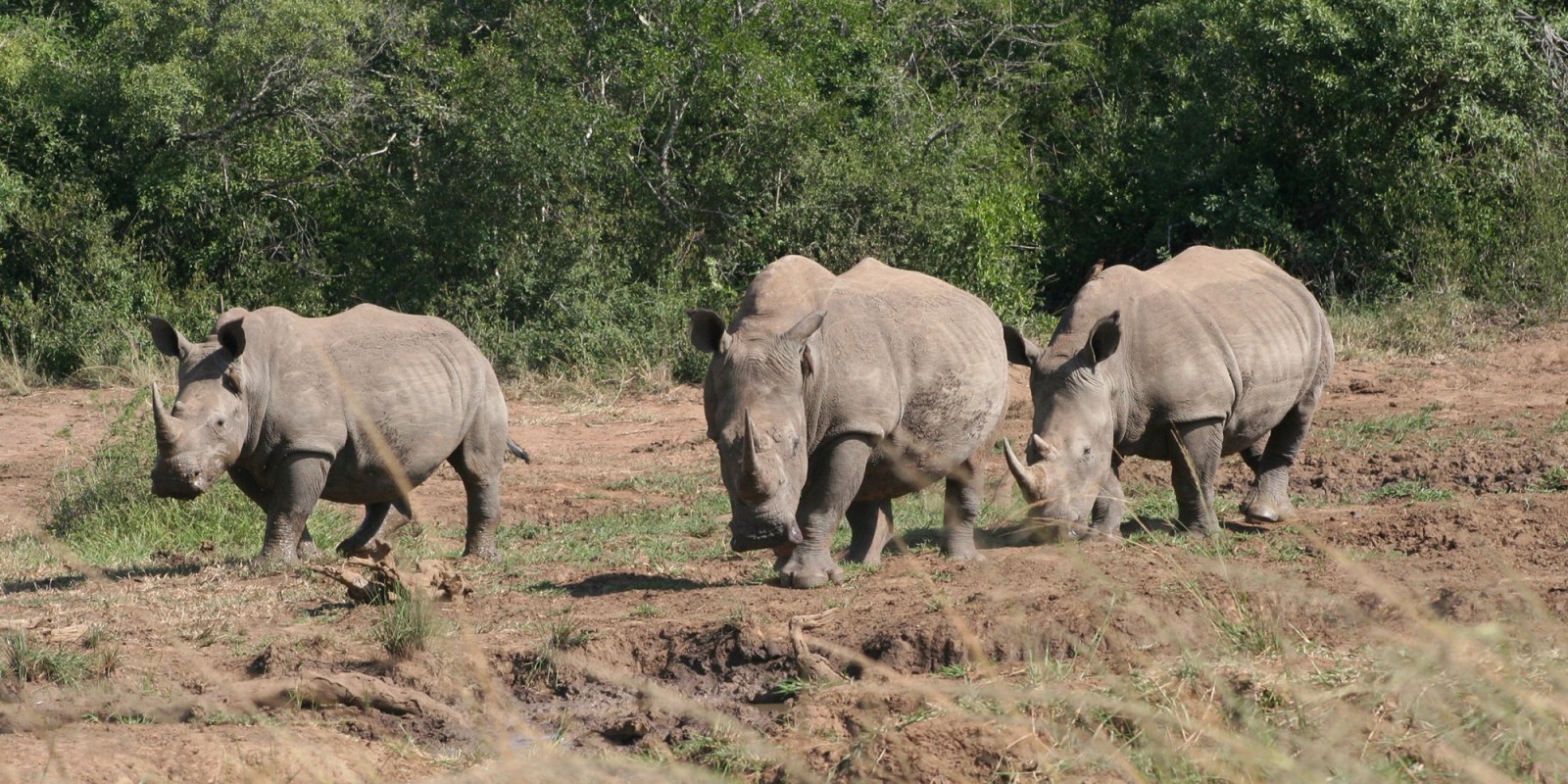
At least 116 rhinos were poached in the Hluhluwe-iMfolozi Park in the first five months of 2022. (Photo: Tony Carnie)
By Tony Carnie | 31 May 2022
As the slaughter rate of KwaZulu-Natal’s rhinos soars to record levels, a buried government report has brought to light some major weaknesses in anti-poaching measures by the Ezemvelo KZN Wildlife provincial conservation agency.
_______________________________________________________________________________________________________
Apart from evidence that some Ezemvelo board members tried to slip untrained ANC “military vets” into positions as game rangers, the report also raises concern about outdated weapons for rangers, uncontrolled access points to parks, cases of indiscipline, low morale and post-traumatic stress among anti-poaching staff, and an exodus of skilled staff from key posts.
Some of the information in it might be dated, but the first part of the provincial government task team report has nevertheless highlighted several weaknesses in anti-poaching tactics in the flagship Hluhluwe-iMfolozi Park.
Hluhluwe-iMfolozi is one of the oldest game reserves in Africa, famous for its role in saving the white rhino species from extinction during the 1890s. Under the leadership of legendary ranger Dr Ian Player, this reserve provided the entire global foundation stock for the reintroduction of white rhinos to the Kruger National Park and other reserves across the continent from the 1960s.
But in the first five months of 2022, at least 118 rhinos were killed by poachers in KZN, most of them in this 96,000ha Big Five reserve. This is the highest daily killing rate recorded in the park and unless the trend is reversed soon, the year-end losses will almost certainly exceed the previous record from 2017 when at least 222 of these animals were poached.
Now, following a successful Promotion of Access to Information Act request by the DA and its KZN legislature member, Heinz de Boer, the first 53 pages of a hitherto unpublished government report have come to light.
Under wraps
The task team was appointed in late 2016 to conduct a detailed threat assessment on rhino poaching in KZN, including the ability of the criminal justice system to control poaching. It is understood that the report was finally presented to the government more than two years ago – but kept under wraps thereafter.
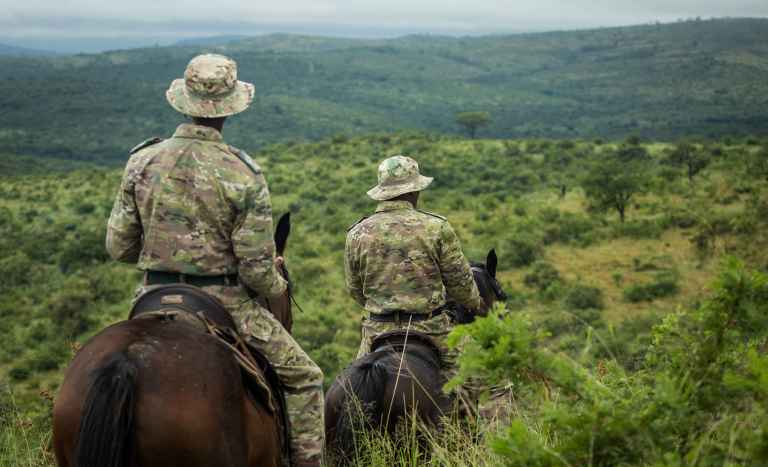
Rangers patrol in the 96,000ha Hluhluwe-iMfolozi Park. (Photo: Project Rhino)
De Boer, the party’s provincial spokesperson on the environment and tourism, has welcomed disclosure of the first section of the report, but noted that the government had not committed to public disclosure of the second part because it allegedly contains sensitive information linked to ongoing anti-poaching investigations.
De Boer is pushing to have the “classified” second part tabled in the provincial parliament for urgent in-committee consideration.
“We should have sat down two years ago as members of the provincial legislature to discuss this damning report and to take immediate action,” he said, adding that a separate forensic investigation into the conduct of Ezemvelo board members seemed to have gone nowhere.
“The premier and his cabinet cannot be allowed to sweep the apparent forensic investigation under the carpet. To date, however, this seems to be the case. According to sources, no findings have been made, while the probe is yet to begin. This inaction smacks of political dithering in the hopes that public focus will shift from the issue and that ANC members – who served on the former board – will be spared the consequences.”
He appears to be referring to allegations that certain board members meddled in the day-to-day running of Ezemvelo operations. The entire board was suspended in April 2020 after “prima facie allegations against the Board as a collective”.
One example of “overreach” reported to the task team concerned “certain board members with vested interests in employment issues, apparently attempting to fill scarce ranger posts with military veterans, who had little or no conservation experience or qualifications”.
“The impact of this endeavour reportedly delayed the filling of these critical posts for a significant period, delaying much-needed ‘feet on the ground’ personnel necessary to address the increasing poaching activities… In our view it is essential that… any person employed by Ezemvelo in the conservation or law enforcement field must either have a recognised conservation background or be trained in conservation, preferably in Ezemvelo’s established training facilities.”
It is possible that the situation has changed after the report was written, but the task team questioned whether Ezemvelo was prepared adequately for the new phase of “low-intensity warfare” financed by international poaching syndicates.
‘More militaristic’
The team noted that Ezemvelo’s traditional law-enforcement model had not changed substantially in 60 years, when it was established to control subsistence bushmeat poaching. But poachers were now well armed and organised and rangers had to adapt to meet this new threat.
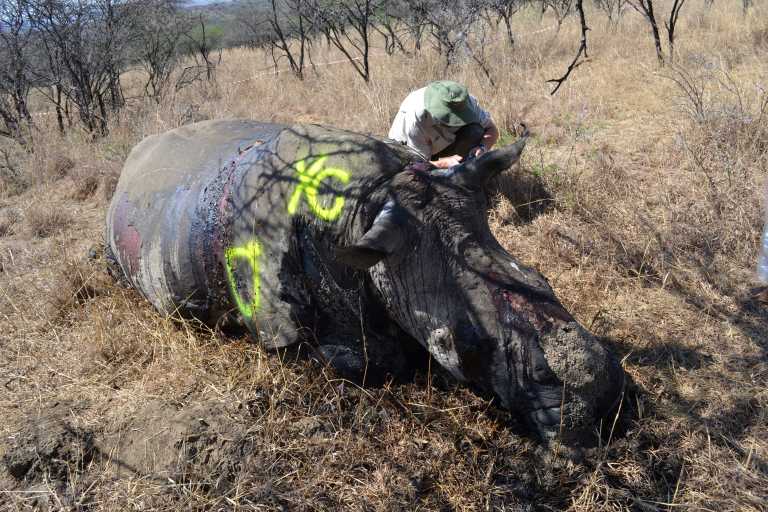
A wildlife manager collects evidence from the carcass of a dehorned rhino in Ezemvelo’s Weenen Nature Reserve. (Photo: Ezemvelo KZN Wildlife)
“In consequence their roles have had to become more militaristic. In many respects rhino poaching has forced management to adopt intelligence-based counterinsurgency tactics to combat poaching, which has involved rangers performing duties akin to those of soldiers.”
The task team was concerned that some anti-poaching personnel were already showing signs of post-traumatic stress owing to the excessive demands made on them.
Returning to the role and mandate of the board, the task team questioned whether certain board members had the requisite “deep interest” in nature conservation.
One top official confided that his working relationship with the board was poor, with some members “meddling” in management decisions.
“The Board met too frequently and ran up excessive expenditure unnecessarily and, in one case, held 40 meetings in the space of six months.
“If correct, this appeared to the task team as excessive, particularly in the light of the need to reduce costs… This unhealthy state of affairs, in our view, did not only weaken the organisation, but it indirectly caused a breakdown in senior leadership morale, thus adversely affecting all programmes including the anti-rhino poaching initiatives.
The prosecution of poachers after they have killed an animal creates a false sense of achievement in operational objectives. In reality it is a failure, as the rhino is dead!
“A startling example of the Board exceeding its mandate was its involvement in a potential agreement between The Royal Rhino and Elephant Reserves of Southern Africa (Pty) Ltd. Effectively, this agreement would have outsourced nature conservation in the KZN reserves to the abovementioned corporation. The Board would have abdicated its statutory obligations to protect and manage protected areas within the province, to a private company with vested financial interests. This process got as far as agreements being signed, but fortunately it was stopped by the urgent intervention of the then responsible MEC after he considered a report on the matter received from the Ian Player/Magqubu Ntombela Foundation.
“In current parlance this agreement would have led to ‘State Capture’ in that the State’s responsibilities would have been ceded to a private organisation for financial gain.”
Back on the ground, however, some rangers on the frontline were carrying outdated weapons, “some of which are more than 60 years old, having been donated to the organisation by the then South African Defence Force… It was reported that in any event there was a shortage of rifles available for anti-poaching operations. This is obviously unacceptable.”
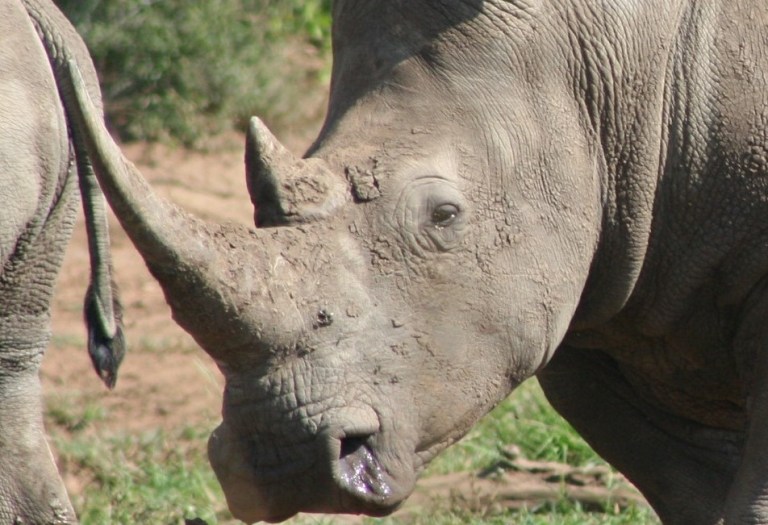
The Hluhluwe-iMfolozi Park is one of the oldest game reserves in Africa. Under the leadership of legendary ranger Dr Ian Player, it provided the entire global foundation stock for the reintroduction of white rhinos to the Kruger National Park and other reserves across the continent from the 1960s. (Photo: Tony Carnie)
There was also a need to adapt tactics to confront sophisticated poaching gangs. Over recent years the more effective counterpoaching response in the Kruger Park has forced poaching gangs to look for softer targets.
According to the task team, Ezemvelo reserves are much smaller than Kruger, which meant poachers struck faster and spent less time in Hluhluwe-iMfolozi – hours as opposed to the days they sometimes spent in Kruger.
“It is therefore essential to deploy operatives rapidly to have any chance of preventing a kill… In KZN, in order to prevent kills, time is of the essence. Tactics must be developed where rangers are deployed in a much shorter period than currently is the case.
“It is essential that air support and deployment by helicopter is available at all times, day and night, given the short time poachers take to reach their prey. The focus should be on preventative measures, as in most cases in KZN, once an incursion is detected there is often too little time to prevent the poachers from killing the rhino.
“While the poacher may be caught later, the damage is already done. While every arrest and conviction is important, the prosecution of poachers after they have killed an animal creates a false sense of achievement in operational objectives. In reality it is a failure, as the rhino is dead! Poachers must be intercepted before they are able to kill the animal.”
Gate security loopholes also needed to be closed urgently.
One example was the Ophathe Game Reserve, which had lost its entire population of 48 rhino due to inadequate perimeter monitoring and control.
“A disturbing feature of our investigations showed that there are a number of completely unmanaged gates on the borders of the (Hluhluwe-iMfolozi) park through which persons can enter without being seen, recorded or monitored in any way.
“While these gates were originally established for the convenience of staff to enter from their homes in the adjacent area, the level of poaching is such that this whole system needs to be revisited. People should only be allowed to enter the reserves through manned gates where security measures are applied.”
There should also be better use of sniffer dogs at park entrances. All vehicles should be checked to ensure that the number of car occupants leaving the park matched the number who entered in that vehicle. The Corridor Road, a public tar road running through the centre of the park, was another major risk area.
“The road has a relatively high traffic volume day and night and the only form of control is a cattle grid on the exit and entrance. In order to not restrict game movement, there is no fence on either side of this road.
“Unfortunately, the area that it passes through is a sought-after area for wildlife. Rhino can often be seen grazing right next to the road, thus making easy prey for the poaching gangs. A large number of rhino have unfortunately been lost to poachers along the Corridor Road.”
The task team therefore recommended that security booms be installed on both sides of the Corridor Road and manned 24/7 (or at least during the hours of darkness).
Vehicles should be stopped and searched at regular intervals to create a deterrence factor. During full moon and other high threat periods, there should be regular vehicle patrols, along with number plate and licence-recognition camera systems.
Alleged failures by top-level leadership were another disturbing feature mentioned by the task team.
“Until recently the Park Manager of Hluhluwe-iMfolozi Reserve did not reside in the reserve but in fact lived in Durban, some 300km away from his area of responsibility. This anomaly was allowed to continue even though this was contrary to policy which required that the Park Manager resided in the park.”
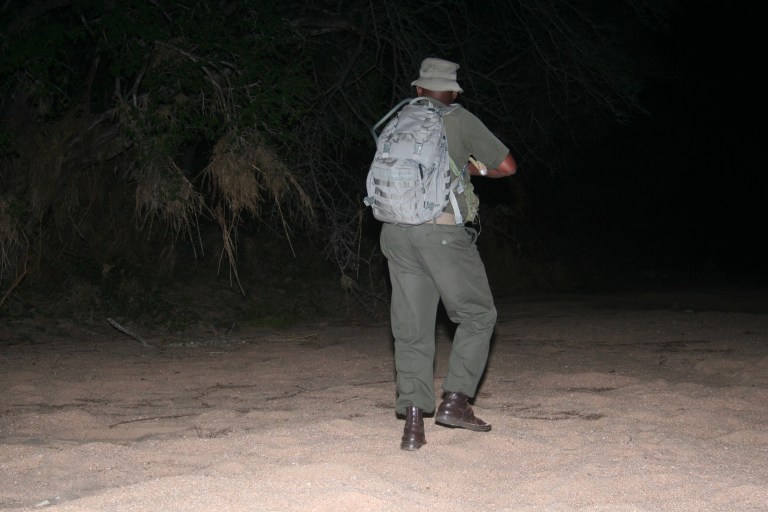
An armed ranger on night patrol along a dry river bank in the Kruger National Park. (Photo: Tony Carnie)
There were similar reports about other senior managers spending much time outside the reserve.
“As a result of this vacuum in leadership, some of the responsibilities of running the reserve fell upon the section rangers who are already stretched in their attempts to curb poaching. A further consequence of management not residing within the park has been the adverse impact on morale. The field ranger corps cannot be expected to place their lives in danger when their managers are absent from the park at critical periods.”
‘Compromised’ discipline
Another red flag was raised over alleged indiscipline and an exodus of demoralised anti-poaching staff.
“Operations against poachers are essentially paramilitary in nature. It is thus important that strict discipline applies. The Task Team was concerned that the required levels of discipline were being compromised as opposed to the Kruger National Park, which placed a strong emphasis on discipline and professionalism.
“It was reported that lines of reporting were blurred in that frequently junior staff contacted senior management directly, to question decisions made by middle management. This, it was reported, had the effect of undermining middle management and created a climate where middle management became insecure and unable to exercise proper control over their subordinates.
“Furthermore, it was reported that there was a general lack of consequence management in that disciplinary hearings and processes were performed rarely and persons accused of disciplinary infractions were rarely charged. It was reported that disciplinary matters were sometimes reduced to racial spats, disguising the underlying infraction. In our diverse democracy it is important that racial tensions are properly managed and understood and interventions are put in place to build partnerships and trust within teams.
“Almost every member of field staff that we interviewed cited the lack of discipline as one of their major concerns. If urgent steps are not taken to reinstate discipline and accountability, no amount of financial or other assistance will save the organisation from an inevitable demise. This will compromise all efforts to conserve the rhino species.
“The breakdown of morale and lack of proper diversity management, we were informed, has directly contributed to an exodus of experienced and skilled managers whose experience is a great loss to the organisation and the anti-poaching drive. Former staff members with vast experience in KZN reserves now occupy senior conservation positions in reserves in other parts of Africa. We cannot afford the loss of this expertise.”
There is indeed suspicion of collusion between criminal syndicates and those tasked with conservation
These are merely excerpts from the first part of the report. What else is there in the second part?
De Boer is adamant that the rhino task team report, and the investigation into the former board, cannot be allowed to “to fade into the sunset”.
In his initial response to the report, provincial environment MEC Ravi Pillay acknowledged that current levels of rhino poaching point to a “severe syndicated operation and brazenness level”.
“While the security forces are responding and the increased number of rangers deployed, we are mindful that it is only provincial, national and international coordinated responses that will have a long-term effect,” he said in a statement on 14 May.
“The Premier has tasked my department with processing and implementing recommendations of the report by the Task Team on Rhino Poaching in KwaZulu-Natal and this is a work in progress.
“It is my considered opinion that it will not be in the public interest to release the report into the public domain at this stage. Indeed, the authors specifically classify important parts of the report because of the sensitive nature concerning its impact on further investigations.
“The broad thrust of the report is receiving attention and will require a multidisciplinary approach between Ezemvelo KZN Wildlife, the national Department of Environmental Affairs, SAPS, NPA and State Security.
“There is indeed suspicion of collusion between criminal syndicates and those tasked with conservation… We recognise that the starting point in the anti-rhino poaching effort in KZN is within Ezemvelo KZN Wildlife. This entity has been in a poor state of affairs for some time, leading to the former board’s dissolution.
“The appointment of the new Board of Directors is imminent. The process would have been concluded last month, but it was interrupted due to the recent floods. The appointment of the new Board will be a critical milestone in the institutional recovery of Ezemvelo KZN Wildlife as a whole and our anti-rhino poaching efforts as well,” Pillay concluded. DM/OBP

At least 116 rhinos were poached in the Hluhluwe-iMfolozi Park in the first five months of 2022. (Photo: Tony Carnie)
By Tony Carnie | 31 May 2022
As the slaughter rate of KwaZulu-Natal’s rhinos soars to record levels, a buried government report has brought to light some major weaknesses in anti-poaching measures by the Ezemvelo KZN Wildlife provincial conservation agency.
_______________________________________________________________________________________________________
Apart from evidence that some Ezemvelo board members tried to slip untrained ANC “military vets” into positions as game rangers, the report also raises concern about outdated weapons for rangers, uncontrolled access points to parks, cases of indiscipline, low morale and post-traumatic stress among anti-poaching staff, and an exodus of skilled staff from key posts.
Some of the information in it might be dated, but the first part of the provincial government task team report has nevertheless highlighted several weaknesses in anti-poaching tactics in the flagship Hluhluwe-iMfolozi Park.
Hluhluwe-iMfolozi is one of the oldest game reserves in Africa, famous for its role in saving the white rhino species from extinction during the 1890s. Under the leadership of legendary ranger Dr Ian Player, this reserve provided the entire global foundation stock for the reintroduction of white rhinos to the Kruger National Park and other reserves across the continent from the 1960s.
But in the first five months of 2022, at least 118 rhinos were killed by poachers in KZN, most of them in this 96,000ha Big Five reserve. This is the highest daily killing rate recorded in the park and unless the trend is reversed soon, the year-end losses will almost certainly exceed the previous record from 2017 when at least 222 of these animals were poached.
Now, following a successful Promotion of Access to Information Act request by the DA and its KZN legislature member, Heinz de Boer, the first 53 pages of a hitherto unpublished government report have come to light.
Under wraps
The task team was appointed in late 2016 to conduct a detailed threat assessment on rhino poaching in KZN, including the ability of the criminal justice system to control poaching. It is understood that the report was finally presented to the government more than two years ago – but kept under wraps thereafter.

Rangers patrol in the 96,000ha Hluhluwe-iMfolozi Park. (Photo: Project Rhino)
De Boer, the party’s provincial spokesperson on the environment and tourism, has welcomed disclosure of the first section of the report, but noted that the government had not committed to public disclosure of the second part because it allegedly contains sensitive information linked to ongoing anti-poaching investigations.
De Boer is pushing to have the “classified” second part tabled in the provincial parliament for urgent in-committee consideration.
“We should have sat down two years ago as members of the provincial legislature to discuss this damning report and to take immediate action,” he said, adding that a separate forensic investigation into the conduct of Ezemvelo board members seemed to have gone nowhere.
“The premier and his cabinet cannot be allowed to sweep the apparent forensic investigation under the carpet. To date, however, this seems to be the case. According to sources, no findings have been made, while the probe is yet to begin. This inaction smacks of political dithering in the hopes that public focus will shift from the issue and that ANC members – who served on the former board – will be spared the consequences.”
He appears to be referring to allegations that certain board members meddled in the day-to-day running of Ezemvelo operations. The entire board was suspended in April 2020 after “prima facie allegations against the Board as a collective”.
One example of “overreach” reported to the task team concerned “certain board members with vested interests in employment issues, apparently attempting to fill scarce ranger posts with military veterans, who had little or no conservation experience or qualifications”.
“The impact of this endeavour reportedly delayed the filling of these critical posts for a significant period, delaying much-needed ‘feet on the ground’ personnel necessary to address the increasing poaching activities… In our view it is essential that… any person employed by Ezemvelo in the conservation or law enforcement field must either have a recognised conservation background or be trained in conservation, preferably in Ezemvelo’s established training facilities.”
It is possible that the situation has changed after the report was written, but the task team questioned whether Ezemvelo was prepared adequately for the new phase of “low-intensity warfare” financed by international poaching syndicates.
‘More militaristic’
The team noted that Ezemvelo’s traditional law-enforcement model had not changed substantially in 60 years, when it was established to control subsistence bushmeat poaching. But poachers were now well armed and organised and rangers had to adapt to meet this new threat.

A wildlife manager collects evidence from the carcass of a dehorned rhino in Ezemvelo’s Weenen Nature Reserve. (Photo: Ezemvelo KZN Wildlife)
“In consequence their roles have had to become more militaristic. In many respects rhino poaching has forced management to adopt intelligence-based counterinsurgency tactics to combat poaching, which has involved rangers performing duties akin to those of soldiers.”
The task team was concerned that some anti-poaching personnel were already showing signs of post-traumatic stress owing to the excessive demands made on them.
Returning to the role and mandate of the board, the task team questioned whether certain board members had the requisite “deep interest” in nature conservation.
One top official confided that his working relationship with the board was poor, with some members “meddling” in management decisions.
“The Board met too frequently and ran up excessive expenditure unnecessarily and, in one case, held 40 meetings in the space of six months.
“If correct, this appeared to the task team as excessive, particularly in the light of the need to reduce costs… This unhealthy state of affairs, in our view, did not only weaken the organisation, but it indirectly caused a breakdown in senior leadership morale, thus adversely affecting all programmes including the anti-rhino poaching initiatives.
The prosecution of poachers after they have killed an animal creates a false sense of achievement in operational objectives. In reality it is a failure, as the rhino is dead!
“A startling example of the Board exceeding its mandate was its involvement in a potential agreement between The Royal Rhino and Elephant Reserves of Southern Africa (Pty) Ltd. Effectively, this agreement would have outsourced nature conservation in the KZN reserves to the abovementioned corporation. The Board would have abdicated its statutory obligations to protect and manage protected areas within the province, to a private company with vested financial interests. This process got as far as agreements being signed, but fortunately it was stopped by the urgent intervention of the then responsible MEC after he considered a report on the matter received from the Ian Player/Magqubu Ntombela Foundation.
“In current parlance this agreement would have led to ‘State Capture’ in that the State’s responsibilities would have been ceded to a private organisation for financial gain.”
Back on the ground, however, some rangers on the frontline were carrying outdated weapons, “some of which are more than 60 years old, having been donated to the organisation by the then South African Defence Force… It was reported that in any event there was a shortage of rifles available for anti-poaching operations. This is obviously unacceptable.”

The Hluhluwe-iMfolozi Park is one of the oldest game reserves in Africa. Under the leadership of legendary ranger Dr Ian Player, it provided the entire global foundation stock for the reintroduction of white rhinos to the Kruger National Park and other reserves across the continent from the 1960s. (Photo: Tony Carnie)
There was also a need to adapt tactics to confront sophisticated poaching gangs. Over recent years the more effective counterpoaching response in the Kruger Park has forced poaching gangs to look for softer targets.
According to the task team, Ezemvelo reserves are much smaller than Kruger, which meant poachers struck faster and spent less time in Hluhluwe-iMfolozi – hours as opposed to the days they sometimes spent in Kruger.
“It is therefore essential to deploy operatives rapidly to have any chance of preventing a kill… In KZN, in order to prevent kills, time is of the essence. Tactics must be developed where rangers are deployed in a much shorter period than currently is the case.
“It is essential that air support and deployment by helicopter is available at all times, day and night, given the short time poachers take to reach their prey. The focus should be on preventative measures, as in most cases in KZN, once an incursion is detected there is often too little time to prevent the poachers from killing the rhino.
“While the poacher may be caught later, the damage is already done. While every arrest and conviction is important, the prosecution of poachers after they have killed an animal creates a false sense of achievement in operational objectives. In reality it is a failure, as the rhino is dead! Poachers must be intercepted before they are able to kill the animal.”
Gate security loopholes also needed to be closed urgently.
One example was the Ophathe Game Reserve, which had lost its entire population of 48 rhino due to inadequate perimeter monitoring and control.
“A disturbing feature of our investigations showed that there are a number of completely unmanaged gates on the borders of the (Hluhluwe-iMfolozi) park through which persons can enter without being seen, recorded or monitored in any way.
“While these gates were originally established for the convenience of staff to enter from their homes in the adjacent area, the level of poaching is such that this whole system needs to be revisited. People should only be allowed to enter the reserves through manned gates where security measures are applied.”
There should also be better use of sniffer dogs at park entrances. All vehicles should be checked to ensure that the number of car occupants leaving the park matched the number who entered in that vehicle. The Corridor Road, a public tar road running through the centre of the park, was another major risk area.
“The road has a relatively high traffic volume day and night and the only form of control is a cattle grid on the exit and entrance. In order to not restrict game movement, there is no fence on either side of this road.
“Unfortunately, the area that it passes through is a sought-after area for wildlife. Rhino can often be seen grazing right next to the road, thus making easy prey for the poaching gangs. A large number of rhino have unfortunately been lost to poachers along the Corridor Road.”
The task team therefore recommended that security booms be installed on both sides of the Corridor Road and manned 24/7 (or at least during the hours of darkness).
Vehicles should be stopped and searched at regular intervals to create a deterrence factor. During full moon and other high threat periods, there should be regular vehicle patrols, along with number plate and licence-recognition camera systems.
Alleged failures by top-level leadership were another disturbing feature mentioned by the task team.
“Until recently the Park Manager of Hluhluwe-iMfolozi Reserve did not reside in the reserve but in fact lived in Durban, some 300km away from his area of responsibility. This anomaly was allowed to continue even though this was contrary to policy which required that the Park Manager resided in the park.”

An armed ranger on night patrol along a dry river bank in the Kruger National Park. (Photo: Tony Carnie)
There were similar reports about other senior managers spending much time outside the reserve.
“As a result of this vacuum in leadership, some of the responsibilities of running the reserve fell upon the section rangers who are already stretched in their attempts to curb poaching. A further consequence of management not residing within the park has been the adverse impact on morale. The field ranger corps cannot be expected to place their lives in danger when their managers are absent from the park at critical periods.”
‘Compromised’ discipline
Another red flag was raised over alleged indiscipline and an exodus of demoralised anti-poaching staff.
“Operations against poachers are essentially paramilitary in nature. It is thus important that strict discipline applies. The Task Team was concerned that the required levels of discipline were being compromised as opposed to the Kruger National Park, which placed a strong emphasis on discipline and professionalism.
“It was reported that lines of reporting were blurred in that frequently junior staff contacted senior management directly, to question decisions made by middle management. This, it was reported, had the effect of undermining middle management and created a climate where middle management became insecure and unable to exercise proper control over their subordinates.
“Furthermore, it was reported that there was a general lack of consequence management in that disciplinary hearings and processes were performed rarely and persons accused of disciplinary infractions were rarely charged. It was reported that disciplinary matters were sometimes reduced to racial spats, disguising the underlying infraction. In our diverse democracy it is important that racial tensions are properly managed and understood and interventions are put in place to build partnerships and trust within teams.
“Almost every member of field staff that we interviewed cited the lack of discipline as one of their major concerns. If urgent steps are not taken to reinstate discipline and accountability, no amount of financial or other assistance will save the organisation from an inevitable demise. This will compromise all efforts to conserve the rhino species.
“The breakdown of morale and lack of proper diversity management, we were informed, has directly contributed to an exodus of experienced and skilled managers whose experience is a great loss to the organisation and the anti-poaching drive. Former staff members with vast experience in KZN reserves now occupy senior conservation positions in reserves in other parts of Africa. We cannot afford the loss of this expertise.”
There is indeed suspicion of collusion between criminal syndicates and those tasked with conservation
These are merely excerpts from the first part of the report. What else is there in the second part?
De Boer is adamant that the rhino task team report, and the investigation into the former board, cannot be allowed to “to fade into the sunset”.
In his initial response to the report, provincial environment MEC Ravi Pillay acknowledged that current levels of rhino poaching point to a “severe syndicated operation and brazenness level”.
“While the security forces are responding and the increased number of rangers deployed, we are mindful that it is only provincial, national and international coordinated responses that will have a long-term effect,” he said in a statement on 14 May.
“The Premier has tasked my department with processing and implementing recommendations of the report by the Task Team on Rhino Poaching in KwaZulu-Natal and this is a work in progress.
“It is my considered opinion that it will not be in the public interest to release the report into the public domain at this stage. Indeed, the authors specifically classify important parts of the report because of the sensitive nature concerning its impact on further investigations.
“The broad thrust of the report is receiving attention and will require a multidisciplinary approach between Ezemvelo KZN Wildlife, the national Department of Environmental Affairs, SAPS, NPA and State Security.
“There is indeed suspicion of collusion between criminal syndicates and those tasked with conservation… We recognise that the starting point in the anti-rhino poaching effort in KZN is within Ezemvelo KZN Wildlife. This entity has been in a poor state of affairs for some time, leading to the former board’s dissolution.
“The appointment of the new Board of Directors is imminent. The process would have been concluded last month, but it was interrupted due to the recent floods. The appointment of the new Board will be a critical milestone in the institutional recovery of Ezemvelo KZN Wildlife as a whole and our anti-rhino poaching efforts as well,” Pillay concluded. DM/OBP
"Education is the most powerful weapon which you can use to change the world." Nelson Mandela
The desire for equality must never exceed the demands of knowledge
The desire for equality must never exceed the demands of knowledge
- Lisbeth
- Site Admin
- Posts: 66703
- Joined: Sat May 19, 2012 12:31 pm
- Country: Switzerland
- Location: Lugano
- Contact:
Re: Zikalala issues part of rhino report
As always too late 
Finally someone else says it aloud!The prosecution of poachers after they have killed an animal creates a false sense of achievement in operational objectives. In reality it is a failure, as the rhino is dead!
"Education is the most powerful weapon which you can use to change the world." Nelson Mandela
The desire for equality must never exceed the demands of knowledge
The desire for equality must never exceed the demands of knowledge
- Richprins
- Committee Member
- Posts: 75552
- Joined: Sat May 19, 2012 3:52 pm
- Location: NELSPRUIT
- Contact:
Re: Zikalala issues part of rhino report - ANTI-POACHING DISASTER
It is clear that the ANC government does not care about rhinos, and only regime change will save them.
Please check Needs Attention pre-booking: https://africawild-forum.com/viewtopic.php?f=322&t=596
- Lisbeth
- Site Admin
- Posts: 66703
- Joined: Sat May 19, 2012 12:31 pm
- Country: Switzerland
- Location: Lugano
- Contact:
Re: Zikalala issues part of rhino report - ANTI-POACHING DISASTER
Quite a bunch of corrupt politicians come from KZN; obviously ethics are non a prime question among them 
"Education is the most powerful weapon which you can use to change the world." Nelson Mandela
The desire for equality must never exceed the demands of knowledge
The desire for equality must never exceed the demands of knowledge
- Lisbeth
- Site Admin
- Posts: 66703
- Joined: Sat May 19, 2012 12:31 pm
- Country: Switzerland
- Location: Lugano
- Contact:
Re: Zikalala issues part of rhino report - ANTI-POACHING DISASTER
The Rhino Report is a vital tool in combating poaching — if Ezemvelo KZN Wildlife pays attention
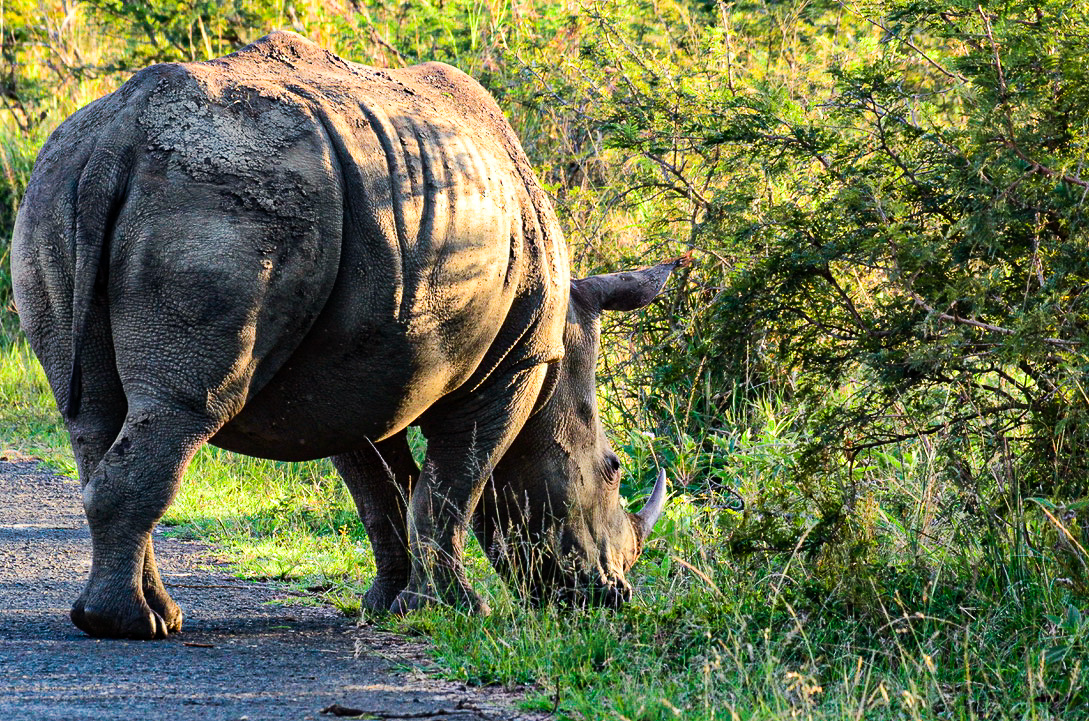
In 1895 the threat to the last remaining rhino was hunters’ vanity, today it is poachers and human greed. (Photo: Supplied)
By Angus Begg | 09 Jun 2022
Looking at a January 2021 photograph of about six or seven rhinos in a mud wallow on a Facebook page dedicated to wildlife viewings in Hluhluwe-iMfolozi Park, my first thought was to wonder if they are still alive today.
__________________________________________________________________________________________________________________
As several stories have revealed across different platforms of late, most pertinently in the long-delayed release of the Rhino Report in Daily Maverick of 31 May, poaching in the Hluhluwe-iMfolozi Park has boomed.
There is little argument among conservation bodies about the numbers — some 95 rhinos have been poached in the park so far this year.
It drew to mind an interview I recorded with former Environmental Affairs Minister, Edna Molewa, in about 2013 for a multimedia eBook I was producing called, iRhino.
“We are working,” said Molewa, “to stop the poaching.”
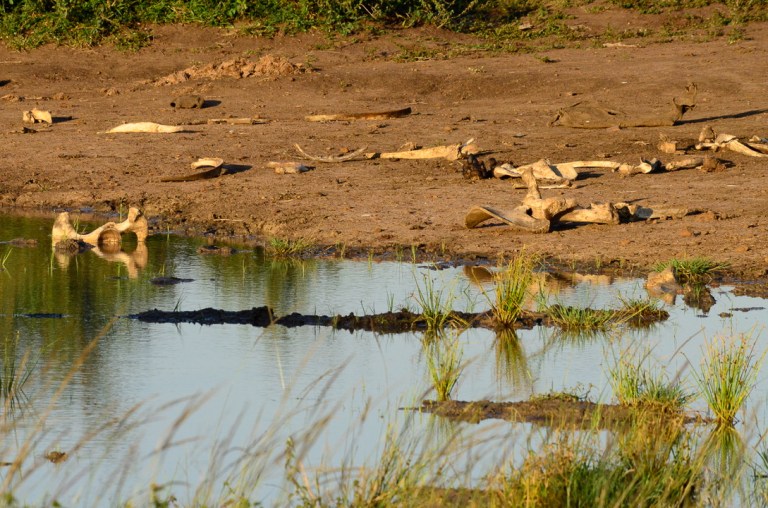
The carcass of a poached rhino at a waterhole on the Hlhuhluwe side of the Hlhuhluwe-iMfolozi Park. (Photo: Supplied)
That was already five years into the poaching epidemic. Nine years after that interview, some 50-odd years after people walked on the moon, it remains incomprehensible that we in South Africa have not managed to stop the slaughter.
Africa Geographic online magazine reported in January that despite “back-breaking work from a dedicated and passionate SANParks team”, the Kruger Park’s white rhino population had plummeted by 75% from the 2010 count, to 2,607.
The already minuscule black rhino population of 415 in 2013 was reported to have dropped to 202 — both figures according to counts undertaken in 2020.
The poached rhinos
“The province has lost 123 rhinos,” according to Ezemvelo KZN Wildlife (EKZN Wildlife) spokesperson Musa Mntambo. “Inside and outside the protected areas.”
Seen in the context of Daily Maverick’s story about the report exposing “some major weaknesses in anti-poaching measures by the provincial conservation agency”, there is concern about what the Rhino Report reveals about the workings of EKZN Wildlife.
There is concern about why it took an opposition politician — DA and KZN legislature member Heinz de Boer — using the Promotion of Access to Information Act (PAIA), to access a crucial report published in 2020 that could have, if acted upon, saved the lives of more than 100 rhinos.
In the time that the report was kept concealed from the public — and given the rapid decline in the Kruger Park’s number of rhinos — poachers turned to smaller reserves and parks where it is easier to locate and kill the animals.
At close on 100,000 hectares, Hluhluwe-iMfolozi Park (HiP) presents a far easier source of rhino horn than the two million hectares of the Kruger Park.
Far east of the Kruger, HiP’s 123 poached rhino would’ve been an easy target — especially when local communities report significant sections of the fence line is broken.
Frightened people and broken fences
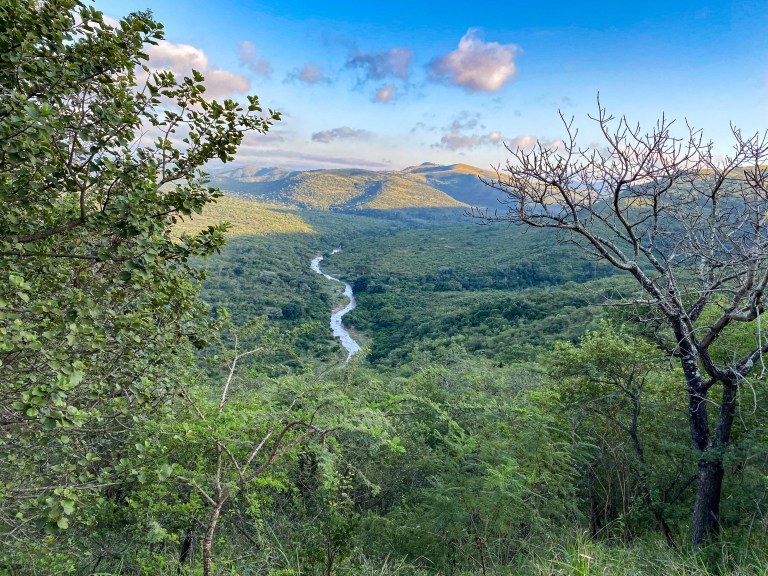
Hluhluwe-iMfolozi Park, established in 1895 to protect the white rhino on the verge of extinction, is reputedly the oldest protected wilderness area in Africa. (Photo: Supplied)
“Numerous confidential sources have indicated large sections of particularly the western fences of HiP are in tatters,” says De Boer.
While this will have facilitated poaching incursions into the park, resident Mzisi Myaka of Ulundi district — which borders the park — says it has also exacerbated human-wildlife conflict in the area.
“We have lions… elephants, three times… they were shot, and Giba Khanyile’s hands were mauled by a leopard… maybe you saw it on TV.” Myaka says a child was also killed by wild animals.
Ezemvelo’s Musa Mntambo says “our relationship with [local] traditional leadership is very good”, acknowledging that “now and then we experience some form of issue, particularly if any of our wildlife escapes and kills livestock outside the park”.
De Boer says this could’ve been avoided if EKZN Wildlife’s “R35-million fencing tender” had not “gone so horribly wrong”. He says the matter is in court, adding that the wildlife authority “certainly doesn’t have the budget to adequately address the issue”.
We are not living in Kenya, where parks and game reserves are generally unfenced and rural communities have negotiated coexistence with the authorities. Broken fences in a Big Five national park should never have been allowed to go unrepaired.
An anonymous private sector conservation professional who works with EKZN Wildlife says he is concerned about the organisation’s functioning.
“They (both Ezemvelo senior executives and field personnel) are not equipped to handle the work required of them; they do not have the capacity, the financial means, the political support, the judicial support or the passion required to do what needs to be done for the province’s conservation efforts.
“And then there’s the undermining drain from corruption.”
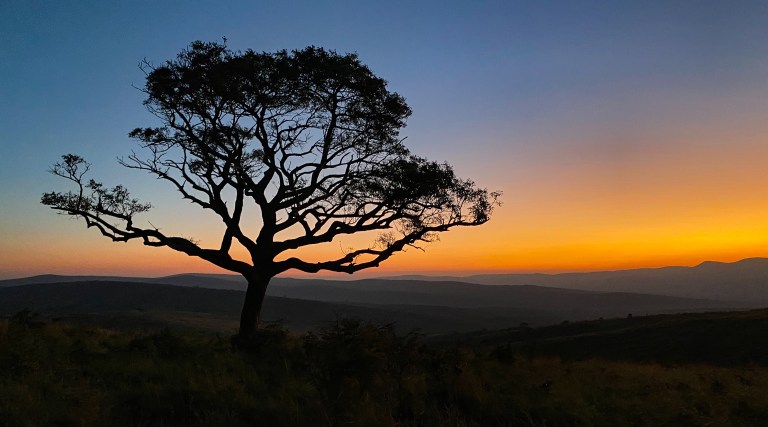
The view from the park’s Mnqabatheki hill, overlooking hunting grounds used in turn by King Shaka and colonial hunters. (Photo: Supplied)
Responding to the Rhino Report in the Daily Maverick article of 31 May, environment MEC Ravi Pillay was quoted as acknowledging “suspicion… of collusion between criminal syndicates and those tasked with conservation”, highlighting that (Ezemvelo KZN Wildlife) “has been in a poor state of affairs for some time”. He said this had led to the former board’s dissolution.
Mntambo says he has not seen the report and is “unable to comment on it as it was not commissioned by Ezemvelo. I suggest that you check with the premier’s office”.
And yet De Boer, who made the PAIA request, says Mntambo was present at the presentation of the report.
‘I did not see it.’ Really?
“The full Ezemvelo executive team were present at the KZN Conservation Committee meeting where rhino poaching, and the anti-poaching initiatives, were discussed last week,” says De Boer.
“Regardless, it is inconceivable that the spokesman (Mntambo) is not aware of recent figures. Given the crisis of poaching, all information should be at the fingertips of all senior Ezemvelo staff.”
Mntambo acknowledges that “the 2022 numbers are high”, adding that if it was not for “our committed staff who risk their lives on a daily basis”, the numbers would be higher.
The report refers to outdated weaponry with which rangers are equipped — “some of which are more than 60 years old, having been donated to the organisation by the then South African Defence Force”.
Mntambo says “our guns are more than adequate to meet the need that we face on a daily basis”, adding that the organisation is embarking on “a replacement programme”.
Given the professed ignorance of the contents of the Rhino Report by a spokesman of the organisation tasked with conservation in an entire province, it becomes a matter of some concern as to who and what to believe.
Especially considering that the Rhino Report refers to “evidence that some Ezemvelo board members tried to slip untrained ANC ‘military vets’ into positions as game rangers”.
Harsh working conditions
When added to the Rhino Report’s concern about “outdated weapons for rangers, uncontrolled access points to parks, cases of indiscipline, low morale, post-traumatic stress among anti-poaching staff and an exodus of skilled staff from key posts” — questions are left hanging: were those board members successful in their efforts to insert cadres into EKZN Wildlife ranger posts? What happened to the board members? Are rangers risking their lives paid enough? Are some rangers complicit in poaching? Why has the fence not been repaired?
It’s sometimes hard to believe that EKZN Wildlife was previously the Natal Parks Board which, while operating during the apartheid era, was the home of Dr Ian Player and his friend and mentor, Magqubu Ntombela, who gave his name to the Magqubu Ntombela Foundation.
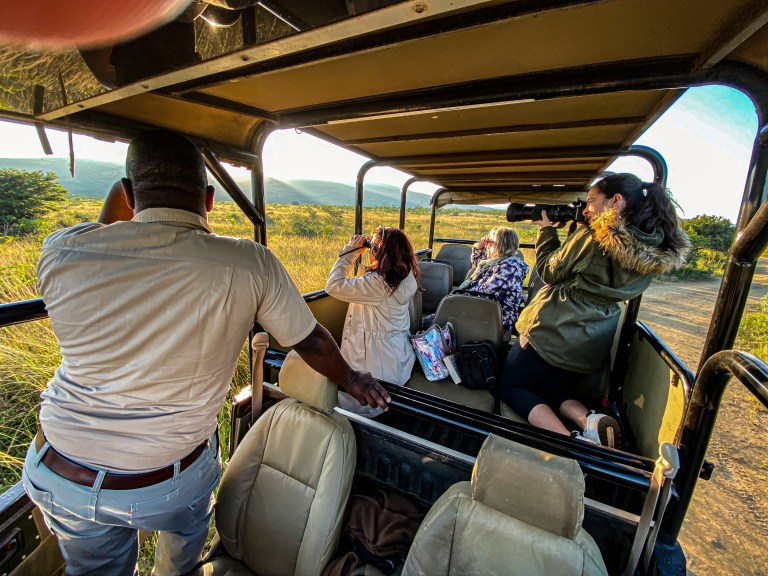
Hluhluwe-iMfolozi Park, established in 1895 to protect the white rhino on the verge of extinction, is reputedly the oldest protected wilderness area in Africa. (Photo: Supplied)
This is where Player led the Operation Rhino team which pioneered the translocation of the remaining population of southern white rhino around South and southern Africa, essentially to repopulate areas in which they had been decimated.
In the eyes of many, not just MEC Pillay and experienced conservationists, EKZN Wildlife has fallen far.
“The burden is just too great for the few dedicated staff,” says the anonymous private sector source, “and good people are there.”
Hope and promise
A conservation professional with property on the park boundary spoke of the “incredible dedication” displayed by the EKZN Wildlife’s anti-poaching rangers he had met — rangers who patrol the park’s dense bush night and day, having to be alert to the threat posed by elephants, nocturnal predators and well-armed poachers.
Supporting EKZN Wildlife in its efforts to protect the rhino are other committed types, conservation NGOs and private sector tourism operators like the Isibindi Foundation.
An initiative of Isibindi Africa Lodges, which, with the Mpembeni community, operates and owns Rhino Ridge Safari Lodge — the only private accommodation in the Hluhluwe section of the park — the foundation is Isibindi’s community-focused arm. It’s a “purpose-driven entity with the sole function of consolidating and expanding the existing community programmes operated at the lodges”.
Homestays, community tours and a community schools environmental programme are some of the initiatives aimed at ensuring that the people of Mpembeni see value in their relationship with the park.
“The Foundation facilitates greater funding opportunities for our projects,” says foundation manager Luke Martin, “and ensures their effective implementation.”
Hearts and minds
The relationship between communities, national parks and nature reserves is really a “hearts and minds” project, a term that described the failure of the United States’ efforts in its war against North Vietnam in the 1960s and 70s, preferring to bomb instead of engage with the citizens of the country they were at war with.
The primary battle here is against rhino poachers, but it’s also a continuous struggle to change mindsets of people who often have no reason to see value in animals behind a fence that sometimes “escape” and cause damage.
Private sector making a difference
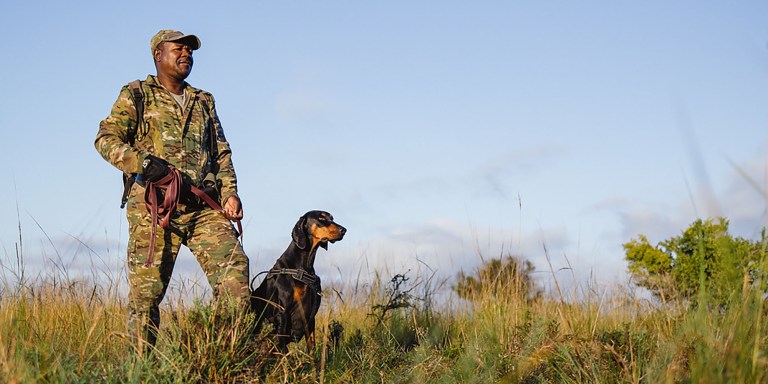
The Hluhluwe-iMfolozi K9 anti-poaching unit. (Photo: Chantelle Melzer)
The Isibindi Foundation’s engagement, says Martin, extends beyond the community fenceline to assisting EKZN Wildlife and other partners in the area, among them the park’s K9 unit.
Currently comprising two tracking dogs, Martin says the K9 unit, another tool in the modest anti-poaching effort, was relaunched in September last year.
“The approximate cost of a trained dog is in the region of R90,000,” says Martin, which, added to the R39,000 it costs to train a handler, probably amounts to more than the conservation authority — in its current embattled state — can manage.
He says the Foundation, alongside the lodge, has launched a campaign to assist the K9 unit in raising funds to add three more dogs and handlers and build up sufficient funding to ensure the unit’s long-term sustainability.
With many such tales of cooperation throughout South Africa, and the private sector’s willingness to step in, the omens for this magnificent park — arguably the oldest in Africa — look more promising than the previous month.
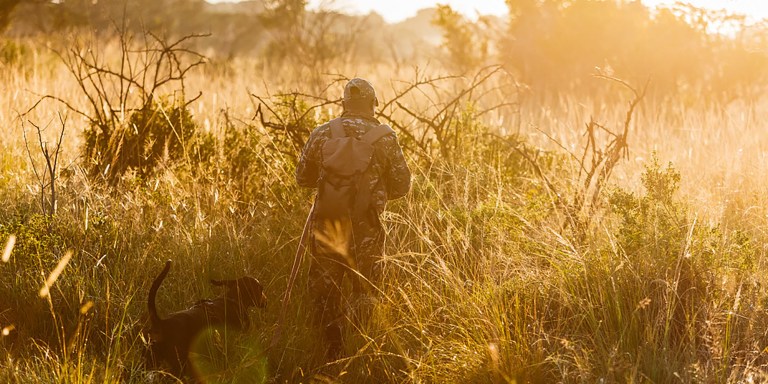
Love, scenting and affection in the bush. Hluhluwe-iMfolozi K9 anti-poaching unit. (Photo: Chantelle Melzer)
“On a positive note,” says De Boer, “many of the solid recommendations from the Rhino Report are contained in the new anti-poaching initiative, and we seem to have the political impetus to make Ezemvelo work… with the private sector and NGOs ready to collaborate and assist.”
The report may have opened up a Pandora’s box for Ezemvelo KZN Wildlife, and while it won’t work miracles, it may be just what the doctor ordered for Hluhluwe-iMfolozi Park, its rhinos and local communities. DM

In 1895 the threat to the last remaining rhino was hunters’ vanity, today it is poachers and human greed. (Photo: Supplied)
By Angus Begg | 09 Jun 2022
Looking at a January 2021 photograph of about six or seven rhinos in a mud wallow on a Facebook page dedicated to wildlife viewings in Hluhluwe-iMfolozi Park, my first thought was to wonder if they are still alive today.
__________________________________________________________________________________________________________________
As several stories have revealed across different platforms of late, most pertinently in the long-delayed release of the Rhino Report in Daily Maverick of 31 May, poaching in the Hluhluwe-iMfolozi Park has boomed.
There is little argument among conservation bodies about the numbers — some 95 rhinos have been poached in the park so far this year.
It drew to mind an interview I recorded with former Environmental Affairs Minister, Edna Molewa, in about 2013 for a multimedia eBook I was producing called, iRhino.
“We are working,” said Molewa, “to stop the poaching.”

The carcass of a poached rhino at a waterhole on the Hlhuhluwe side of the Hlhuhluwe-iMfolozi Park. (Photo: Supplied)
That was already five years into the poaching epidemic. Nine years after that interview, some 50-odd years after people walked on the moon, it remains incomprehensible that we in South Africa have not managed to stop the slaughter.
Africa Geographic online magazine reported in January that despite “back-breaking work from a dedicated and passionate SANParks team”, the Kruger Park’s white rhino population had plummeted by 75% from the 2010 count, to 2,607.
The already minuscule black rhino population of 415 in 2013 was reported to have dropped to 202 — both figures according to counts undertaken in 2020.
The poached rhinos
“The province has lost 123 rhinos,” according to Ezemvelo KZN Wildlife (EKZN Wildlife) spokesperson Musa Mntambo. “Inside and outside the protected areas.”
Seen in the context of Daily Maverick’s story about the report exposing “some major weaknesses in anti-poaching measures by the provincial conservation agency”, there is concern about what the Rhino Report reveals about the workings of EKZN Wildlife.
There is concern about why it took an opposition politician — DA and KZN legislature member Heinz de Boer — using the Promotion of Access to Information Act (PAIA), to access a crucial report published in 2020 that could have, if acted upon, saved the lives of more than 100 rhinos.
In the time that the report was kept concealed from the public — and given the rapid decline in the Kruger Park’s number of rhinos — poachers turned to smaller reserves and parks where it is easier to locate and kill the animals.
At close on 100,000 hectares, Hluhluwe-iMfolozi Park (HiP) presents a far easier source of rhino horn than the two million hectares of the Kruger Park.
Far east of the Kruger, HiP’s 123 poached rhino would’ve been an easy target — especially when local communities report significant sections of the fence line is broken.
Frightened people and broken fences

Hluhluwe-iMfolozi Park, established in 1895 to protect the white rhino on the verge of extinction, is reputedly the oldest protected wilderness area in Africa. (Photo: Supplied)
“Numerous confidential sources have indicated large sections of particularly the western fences of HiP are in tatters,” says De Boer.
While this will have facilitated poaching incursions into the park, resident Mzisi Myaka of Ulundi district — which borders the park — says it has also exacerbated human-wildlife conflict in the area.
“We have lions… elephants, three times… they were shot, and Giba Khanyile’s hands were mauled by a leopard… maybe you saw it on TV.” Myaka says a child was also killed by wild animals.
Ezemvelo’s Musa Mntambo says “our relationship with [local] traditional leadership is very good”, acknowledging that “now and then we experience some form of issue, particularly if any of our wildlife escapes and kills livestock outside the park”.
De Boer says this could’ve been avoided if EKZN Wildlife’s “R35-million fencing tender” had not “gone so horribly wrong”. He says the matter is in court, adding that the wildlife authority “certainly doesn’t have the budget to adequately address the issue”.
We are not living in Kenya, where parks and game reserves are generally unfenced and rural communities have negotiated coexistence with the authorities. Broken fences in a Big Five national park should never have been allowed to go unrepaired.
An anonymous private sector conservation professional who works with EKZN Wildlife says he is concerned about the organisation’s functioning.
“They (both Ezemvelo senior executives and field personnel) are not equipped to handle the work required of them; they do not have the capacity, the financial means, the political support, the judicial support or the passion required to do what needs to be done for the province’s conservation efforts.
“And then there’s the undermining drain from corruption.”

The view from the park’s Mnqabatheki hill, overlooking hunting grounds used in turn by King Shaka and colonial hunters. (Photo: Supplied)
Responding to the Rhino Report in the Daily Maverick article of 31 May, environment MEC Ravi Pillay was quoted as acknowledging “suspicion… of collusion between criminal syndicates and those tasked with conservation”, highlighting that (Ezemvelo KZN Wildlife) “has been in a poor state of affairs for some time”. He said this had led to the former board’s dissolution.
Mntambo says he has not seen the report and is “unable to comment on it as it was not commissioned by Ezemvelo. I suggest that you check with the premier’s office”.
And yet De Boer, who made the PAIA request, says Mntambo was present at the presentation of the report.
‘I did not see it.’ Really?
“The full Ezemvelo executive team were present at the KZN Conservation Committee meeting where rhino poaching, and the anti-poaching initiatives, were discussed last week,” says De Boer.
“Regardless, it is inconceivable that the spokesman (Mntambo) is not aware of recent figures. Given the crisis of poaching, all information should be at the fingertips of all senior Ezemvelo staff.”
Mntambo acknowledges that “the 2022 numbers are high”, adding that if it was not for “our committed staff who risk their lives on a daily basis”, the numbers would be higher.
The report refers to outdated weaponry with which rangers are equipped — “some of which are more than 60 years old, having been donated to the organisation by the then South African Defence Force”.
Mntambo says “our guns are more than adequate to meet the need that we face on a daily basis”, adding that the organisation is embarking on “a replacement programme”.
Given the professed ignorance of the contents of the Rhino Report by a spokesman of the organisation tasked with conservation in an entire province, it becomes a matter of some concern as to who and what to believe.
Especially considering that the Rhino Report refers to “evidence that some Ezemvelo board members tried to slip untrained ANC ‘military vets’ into positions as game rangers”.
Harsh working conditions
When added to the Rhino Report’s concern about “outdated weapons for rangers, uncontrolled access points to parks, cases of indiscipline, low morale, post-traumatic stress among anti-poaching staff and an exodus of skilled staff from key posts” — questions are left hanging: were those board members successful in their efforts to insert cadres into EKZN Wildlife ranger posts? What happened to the board members? Are rangers risking their lives paid enough? Are some rangers complicit in poaching? Why has the fence not been repaired?
It’s sometimes hard to believe that EKZN Wildlife was previously the Natal Parks Board which, while operating during the apartheid era, was the home of Dr Ian Player and his friend and mentor, Magqubu Ntombela, who gave his name to the Magqubu Ntombela Foundation.

Hluhluwe-iMfolozi Park, established in 1895 to protect the white rhino on the verge of extinction, is reputedly the oldest protected wilderness area in Africa. (Photo: Supplied)
This is where Player led the Operation Rhino team which pioneered the translocation of the remaining population of southern white rhino around South and southern Africa, essentially to repopulate areas in which they had been decimated.
In the eyes of many, not just MEC Pillay and experienced conservationists, EKZN Wildlife has fallen far.
“The burden is just too great for the few dedicated staff,” says the anonymous private sector source, “and good people are there.”
Hope and promise
A conservation professional with property on the park boundary spoke of the “incredible dedication” displayed by the EKZN Wildlife’s anti-poaching rangers he had met — rangers who patrol the park’s dense bush night and day, having to be alert to the threat posed by elephants, nocturnal predators and well-armed poachers.
Supporting EKZN Wildlife in its efforts to protect the rhino are other committed types, conservation NGOs and private sector tourism operators like the Isibindi Foundation.
An initiative of Isibindi Africa Lodges, which, with the Mpembeni community, operates and owns Rhino Ridge Safari Lodge — the only private accommodation in the Hluhluwe section of the park — the foundation is Isibindi’s community-focused arm. It’s a “purpose-driven entity with the sole function of consolidating and expanding the existing community programmes operated at the lodges”.
Homestays, community tours and a community schools environmental programme are some of the initiatives aimed at ensuring that the people of Mpembeni see value in their relationship with the park.
“The Foundation facilitates greater funding opportunities for our projects,” says foundation manager Luke Martin, “and ensures their effective implementation.”
Hearts and minds
The relationship between communities, national parks and nature reserves is really a “hearts and minds” project, a term that described the failure of the United States’ efforts in its war against North Vietnam in the 1960s and 70s, preferring to bomb instead of engage with the citizens of the country they were at war with.
The primary battle here is against rhino poachers, but it’s also a continuous struggle to change mindsets of people who often have no reason to see value in animals behind a fence that sometimes “escape” and cause damage.
Private sector making a difference

The Hluhluwe-iMfolozi K9 anti-poaching unit. (Photo: Chantelle Melzer)
The Isibindi Foundation’s engagement, says Martin, extends beyond the community fenceline to assisting EKZN Wildlife and other partners in the area, among them the park’s K9 unit.
Currently comprising two tracking dogs, Martin says the K9 unit, another tool in the modest anti-poaching effort, was relaunched in September last year.
“The approximate cost of a trained dog is in the region of R90,000,” says Martin, which, added to the R39,000 it costs to train a handler, probably amounts to more than the conservation authority — in its current embattled state — can manage.
He says the Foundation, alongside the lodge, has launched a campaign to assist the K9 unit in raising funds to add three more dogs and handlers and build up sufficient funding to ensure the unit’s long-term sustainability.
With many such tales of cooperation throughout South Africa, and the private sector’s willingness to step in, the omens for this magnificent park — arguably the oldest in Africa — look more promising than the previous month.

Love, scenting and affection in the bush. Hluhluwe-iMfolozi K9 anti-poaching unit. (Photo: Chantelle Melzer)
“On a positive note,” says De Boer, “many of the solid recommendations from the Rhino Report are contained in the new anti-poaching initiative, and we seem to have the political impetus to make Ezemvelo work… with the private sector and NGOs ready to collaborate and assist.”
The report may have opened up a Pandora’s box for Ezemvelo KZN Wildlife, and while it won’t work miracles, it may be just what the doctor ordered for Hluhluwe-iMfolozi Park, its rhinos and local communities. DM
"Education is the most powerful weapon which you can use to change the world." Nelson Mandela
The desire for equality must never exceed the demands of knowledge
The desire for equality must never exceed the demands of knowledge
- Richprins
- Committee Member
- Posts: 75552
- Joined: Sat May 19, 2012 3:52 pm
- Location: NELSPRUIT
- Contact:
Re: Zikalala issues part of rhino report - ANTI-POACHING DISASTER
Good article! 
Please check Needs Attention pre-booking: https://africawild-forum.com/viewtopic.php?f=322&t=596
- Lisbeth
- Site Admin
- Posts: 66703
- Joined: Sat May 19, 2012 12:31 pm
- Country: Switzerland
- Location: Lugano
- Contact:
Re: Zikalala issues part of rhino report - ANTI-POACHING DISASTER
CONSERVATION EFFORTS
Three rhino poaching suspects arrested as new board steps in at Ezemvelo KZN Wildlife
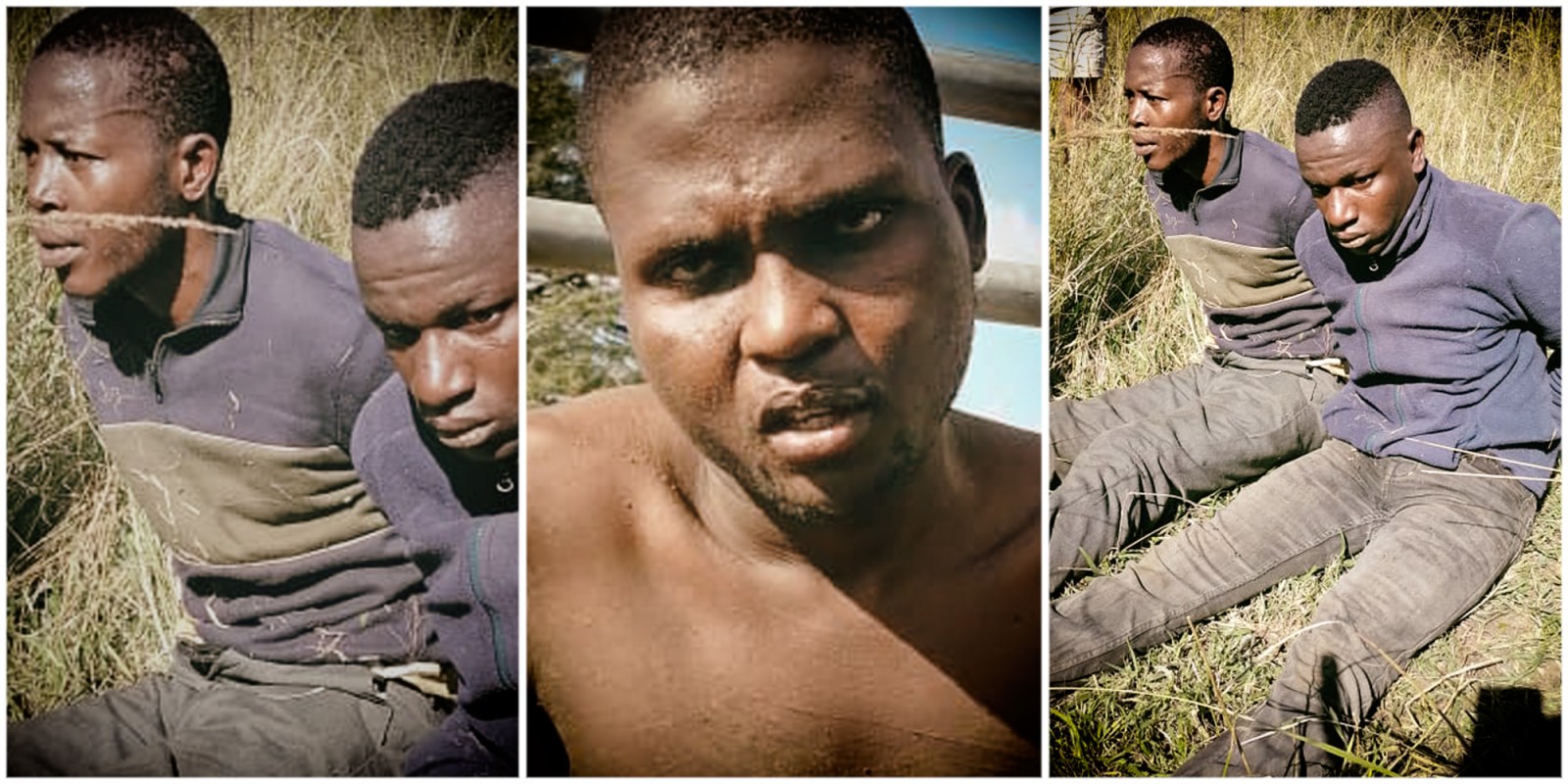
Centre: Alleged poacher Vusi Mdluli apparently ripped off his shirt ‘to blend with the bush’ after being spotted by cameras and a patrolling helicopter. According to Ezemvelo KZN Wildlife: ‘It is common for poachers to try to hide from the Ezemvelo chopper by removing their clothes.’ | Suspects Sizwe Tivane and Samkele Sithole pictured shortly after their arrest in Hluhluwe-iMfolozi Park last week. (Photos: Ezemvelo KZN Wildlife)
By Tony Carnie | 13 Jun 2022
Although all three men were caught before they could kill any rhinos, the death toll for the species has already reached 123 in KwaZulu-Natal in the first six months of this year.
_____________________________________________________________________________________________________________________
Under public pressure for its recent failure to stem a renewed wave of rhino poaching, the Ezemvelo KZN Wildlife agency has announced the arrest of three suspects in the space of two days at its flagship Hluhluwe-iMfolozi Park.
Two alleged poachers drove down to the park from their homes in Mpumalanga and rented or borrowed a rural home just a stone’s throw from the boundary fence, to keep a close watch on rhino movements and field ranger patrols before entering the park.
A third suspect, from nearby Mtubatuba, tore off his shirt and tried to bolt when he spotted a patrol helicopter circling above him, but he was chased down by a K9 dog unit and arrested soon afterwards.
Although all three men were caught before they could kill any rhinos, the death toll for the species has already reached 123 in KwaZulu-Natal in the first six months of this year — mostly in the 97,000-hectare Hluhluwe-iMfolozi Park.
Ezemvelo has been in turmoil for more than a decade. Its last permanent chief executive resigned in 2017 after clashing with board members, and in 2020 the entire board was suspended following “prima facie allegations of maladministration” at the agency, which has an annual budget exceeding R1-billion.
Finally, after a two-year delay, the provincial MEC for environmental affairs, Ravi Pillay, announced the appointment of a new 11-member board on 6 June, although there has not been any word yet on the results of a forensic investigation into the affairs of the previous board members.
Some observers have likened the new board to a curate’s egg, as it includes ANC party stalwarts along with some new members with a sound track record in conservation or financial administration.
But to the disappointment of conservationists who had been urging the provincial government to appoint a nonpolitical team of professionals with a genuine interest in wildlife conservation, the new board will be headed by former provincial agriculture MEC and KZN legislature Speaker Lydia Johnson.
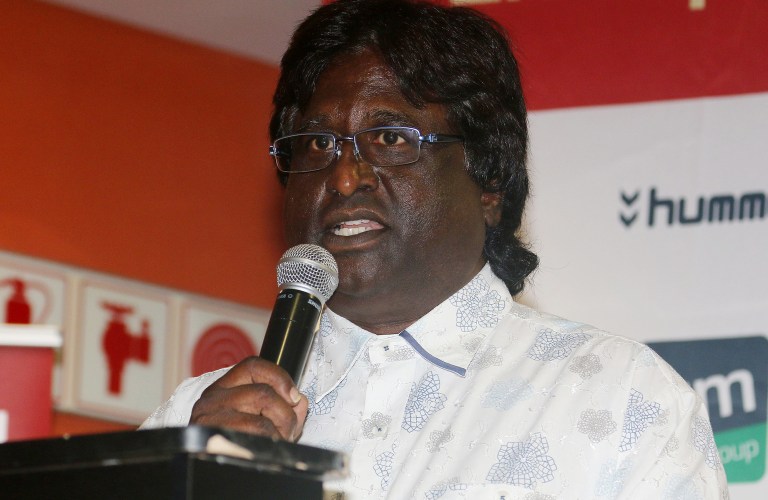
Logie Naidoo, a former deputy mayor of eThekwini, has been appointed to the new Ezemvelo KZN Wildlife board. (Photo: Anesh Debiky / ITM Group via Gallo Images / Getty Images)
Logie Naidoo, a former deputy mayor of eThekwini who has more recently taken on a role as a stand-up comedian during retirement, has also been appointed to the board. Questions have also been raised about the appointment of the young ANC Moses Mabhida Region cadre Njabulo Maxwell Mtolo.
Balanced against these choices, however, the respected conservation and business sector leader Iain Ewing has been appointed as deputy chair of the board.
Notably, Ewing is the only member of the previous board to be reappointed — having resigned in protest in 2020 before his fellow board members were suspended.
Ewing, who has chaired the Ian Player Magqubu Ntombela Foundation and the Wilderness Leadership School, also chairs several charitable trusts.
Shortly before resigning from the former board two years ago, Ewing raised concern that he had not been “privy to matters of significant importance” during his time on board subcommittees.
“Even at major board level, we are not getting the necessary clarity on a number of very concerning issues and in some instances, I have gained the impression that there is a deliberate intent for this information not to be discussed at board meetings,” he said in his resignation letter.
Other members joining him on the new 11-member board are:
Its predecessor, the Natal Parks Board, is credited with saving the white rhino from global extinction. Sadly, however, 2022 may yet go down on record as the worst year for rhino poaching in KZN, with 123 rhinos slaughtered in the first half of this year. The record is 222 killings in 2017.
Last month, the first part of a hitherto secret report on rhino poaching in KZN came to light after a Promotion of Access to Information Act request by the Democratic Alliance. The report exposed significant failures in rhino security at Ezemvelo’s rhino reserves.
Despite these challenges, Ezemvelo has just announced the arrests of the three would-be poachers before they could kill any rhinos.
Spokesperson Musa Mntambo said that Vusi Mdluli from the Mfekayi area in Mtubatuba was arrested on 6 June after his presence in the Hluhluwe-iMfolozi Park was picked up on camera.
“Rangers, assisted by K9, were deployed to track him. When he saw a chopper he decided to run and took off his T-shirt in an attempt to blend with the bush. Unfortunately, the dogs had already seen him and were on top of him before he could implement his escape plan. It is common for poachers to try to hide from the Ezemvelo chopper by removing their clothes.”
Mdluli appeared in court in Hlabisa the following day, 7 June, though Ezemvelo did not say whether he was granted bail. The next day, another two poachers were arrested in the park with assistance from the K9 unit.
“The two had recently travelled from Mpumalanga province and were staying in a house that is a stone’s throw away from HiP. The proximity of the house to the park provided the two with an advantage point [sic] to observe everything that was going on inside the park.
“They were not only able to monitor the field rangers on foot patrol but were also able to scan the movement of rhinos inside the park.
“Ezemvelo field rangers who were on the early morning foot patrol noticed footprints and decided to call the Ezemvelo K9 unit. The K9 unit began to follow the tracks, which led them near where the suspects were hiding.
“Unfortunately, the suspects heard the noises of the rangers approaching and decided to run in different directions. They left behind a bag and a few of their items on the ground. They, however, managed to run with their .375 rifle. A decision was immediately taken to call for a chopper and additional assistance from Wildlife College’s K9 unit. The Wildlife College K9 unit is currently providing training to Ezemvelo K9 unit at HiP.”
The two suspects, Sizwe Tivane and Samkele Sithole, both from Mpumalanga, were arrested in the afternoon. They were found with a .375 rifle. They appeared in court on Friday, 10 June and their case was postponed to 12 June.
“Our improved and random deployment of field rangers, as well as the presence of [the] SAPS inside HiP have made it difficult for would-be poachers to fully understand our movements. TheK9 unit is also proving to be a welcome addition to our fight against rhino poachers. I trust that these recent arrests will provide us with enough information to make more arrests,” said Ezemvelo’s acting CEO, Ntsikelelo Dlulane. DM/OBP
Three rhino poaching suspects arrested as new board steps in at Ezemvelo KZN Wildlife

Centre: Alleged poacher Vusi Mdluli apparently ripped off his shirt ‘to blend with the bush’ after being spotted by cameras and a patrolling helicopter. According to Ezemvelo KZN Wildlife: ‘It is common for poachers to try to hide from the Ezemvelo chopper by removing their clothes.’ | Suspects Sizwe Tivane and Samkele Sithole pictured shortly after their arrest in Hluhluwe-iMfolozi Park last week. (Photos: Ezemvelo KZN Wildlife)
By Tony Carnie | 13 Jun 2022
Although all three men were caught before they could kill any rhinos, the death toll for the species has already reached 123 in KwaZulu-Natal in the first six months of this year.
_____________________________________________________________________________________________________________________
Under public pressure for its recent failure to stem a renewed wave of rhino poaching, the Ezemvelo KZN Wildlife agency has announced the arrest of three suspects in the space of two days at its flagship Hluhluwe-iMfolozi Park.
Two alleged poachers drove down to the park from their homes in Mpumalanga and rented or borrowed a rural home just a stone’s throw from the boundary fence, to keep a close watch on rhino movements and field ranger patrols before entering the park.
A third suspect, from nearby Mtubatuba, tore off his shirt and tried to bolt when he spotted a patrol helicopter circling above him, but he was chased down by a K9 dog unit and arrested soon afterwards.
Although all three men were caught before they could kill any rhinos, the death toll for the species has already reached 123 in KwaZulu-Natal in the first six months of this year — mostly in the 97,000-hectare Hluhluwe-iMfolozi Park.
Ezemvelo has been in turmoil for more than a decade. Its last permanent chief executive resigned in 2017 after clashing with board members, and in 2020 the entire board was suspended following “prima facie allegations of maladministration” at the agency, which has an annual budget exceeding R1-billion.
Finally, after a two-year delay, the provincial MEC for environmental affairs, Ravi Pillay, announced the appointment of a new 11-member board on 6 June, although there has not been any word yet on the results of a forensic investigation into the affairs of the previous board members.
Some observers have likened the new board to a curate’s egg, as it includes ANC party stalwarts along with some new members with a sound track record in conservation or financial administration.
But to the disappointment of conservationists who had been urging the provincial government to appoint a nonpolitical team of professionals with a genuine interest in wildlife conservation, the new board will be headed by former provincial agriculture MEC and KZN legislature Speaker Lydia Johnson.

Logie Naidoo, a former deputy mayor of eThekwini, has been appointed to the new Ezemvelo KZN Wildlife board. (Photo: Anesh Debiky / ITM Group via Gallo Images / Getty Images)
Logie Naidoo, a former deputy mayor of eThekwini who has more recently taken on a role as a stand-up comedian during retirement, has also been appointed to the board. Questions have also been raised about the appointment of the young ANC Moses Mabhida Region cadre Njabulo Maxwell Mtolo.
Balanced against these choices, however, the respected conservation and business sector leader Iain Ewing has been appointed as deputy chair of the board.
Notably, Ewing is the only member of the previous board to be reappointed — having resigned in protest in 2020 before his fellow board members were suspended.
Ewing, who has chaired the Ian Player Magqubu Ntombela Foundation and the Wilderness Leadership School, also chairs several charitable trusts.
Shortly before resigning from the former board two years ago, Ewing raised concern that he had not been “privy to matters of significant importance” during his time on board subcommittees.
“Even at major board level, we are not getting the necessary clarity on a number of very concerning issues and in some instances, I have gained the impression that there is a deliberate intent for this information not to be discussed at board meetings,” he said in his resignation letter.
Other members joining him on the new 11-member board are:
- Shepstone and Wylie law firm partner Siya Mkhize;
- Former Ezemvelo legal adviser and zoologist Andrew Robert Muir;
- Durban financial consultant Dr Zethu Qunta, who has served on audit and risk committees of Parliament, as former chair of the Railway Safety Regulator and a board member of the Durban International Convention Centre;
- Olivia “OJ” Symcox, a Durban public relations consultant and advocate for shark and animal conservation;
- Party stalwart and traditional leader Inkosi Mxolisi Buhlebezwe Wilson Xolo from the KZN South Coast;
- Former Grant Thornton auditor Nomndeni Xolile Banda; and
- Businessman and ardent soccer fan Tallman Lindizwe Sibiya.
Its predecessor, the Natal Parks Board, is credited with saving the white rhino from global extinction. Sadly, however, 2022 may yet go down on record as the worst year for rhino poaching in KZN, with 123 rhinos slaughtered in the first half of this year. The record is 222 killings in 2017.
Last month, the first part of a hitherto secret report on rhino poaching in KZN came to light after a Promotion of Access to Information Act request by the Democratic Alliance. The report exposed significant failures in rhino security at Ezemvelo’s rhino reserves.
Despite these challenges, Ezemvelo has just announced the arrests of the three would-be poachers before they could kill any rhinos.
Spokesperson Musa Mntambo said that Vusi Mdluli from the Mfekayi area in Mtubatuba was arrested on 6 June after his presence in the Hluhluwe-iMfolozi Park was picked up on camera.
“Rangers, assisted by K9, were deployed to track him. When he saw a chopper he decided to run and took off his T-shirt in an attempt to blend with the bush. Unfortunately, the dogs had already seen him and were on top of him before he could implement his escape plan. It is common for poachers to try to hide from the Ezemvelo chopper by removing their clothes.”
Mdluli appeared in court in Hlabisa the following day, 7 June, though Ezemvelo did not say whether he was granted bail. The next day, another two poachers were arrested in the park with assistance from the K9 unit.
“The two had recently travelled from Mpumalanga province and were staying in a house that is a stone’s throw away from HiP. The proximity of the house to the park provided the two with an advantage point [sic] to observe everything that was going on inside the park.
“They were not only able to monitor the field rangers on foot patrol but were also able to scan the movement of rhinos inside the park.
“Ezemvelo field rangers who were on the early morning foot patrol noticed footprints and decided to call the Ezemvelo K9 unit. The K9 unit began to follow the tracks, which led them near where the suspects were hiding.
“Unfortunately, the suspects heard the noises of the rangers approaching and decided to run in different directions. They left behind a bag and a few of their items on the ground. They, however, managed to run with their .375 rifle. A decision was immediately taken to call for a chopper and additional assistance from Wildlife College’s K9 unit. The Wildlife College K9 unit is currently providing training to Ezemvelo K9 unit at HiP.”
The two suspects, Sizwe Tivane and Samkele Sithole, both from Mpumalanga, were arrested in the afternoon. They were found with a .375 rifle. They appeared in court on Friday, 10 June and their case was postponed to 12 June.
“Our improved and random deployment of field rangers, as well as the presence of [the] SAPS inside HiP have made it difficult for would-be poachers to fully understand our movements. TheK9 unit is also proving to be a welcome addition to our fight against rhino poachers. I trust that these recent arrests will provide us with enough information to make more arrests,” said Ezemvelo’s acting CEO, Ntsikelelo Dlulane. DM/OBP
"Education is the most powerful weapon which you can use to change the world." Nelson Mandela
The desire for equality must never exceed the demands of knowledge
The desire for equality must never exceed the demands of knowledge


